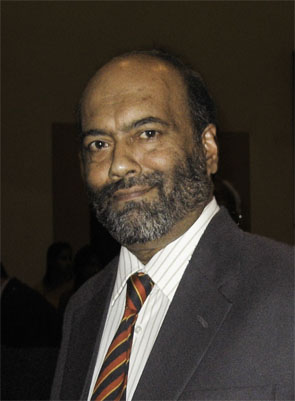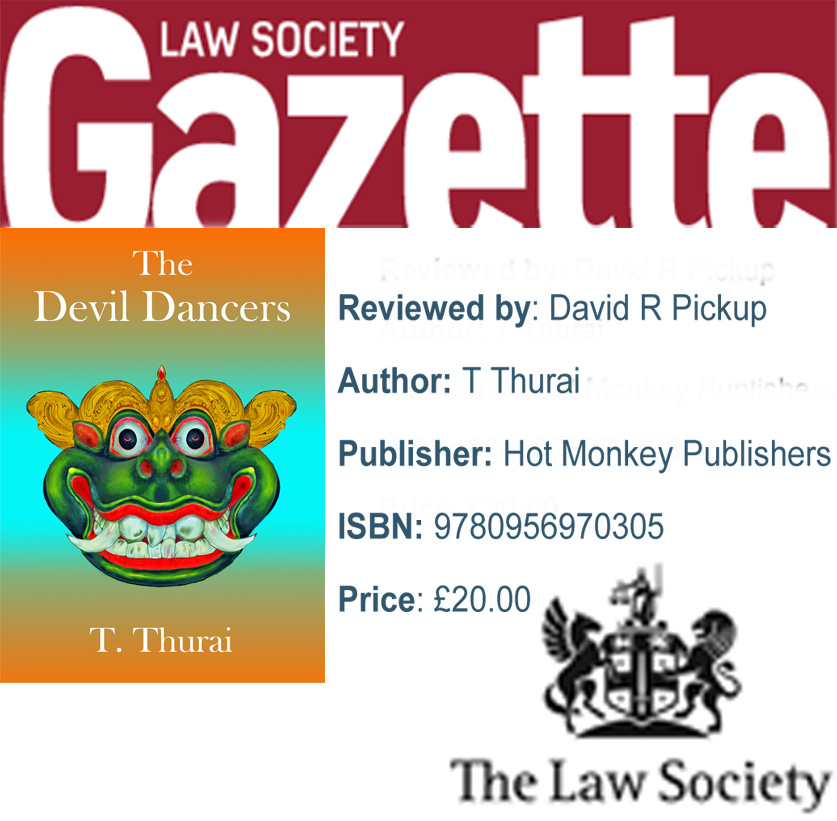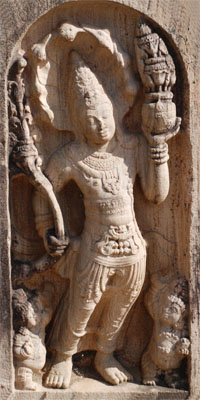|
|
Reviews and links to other sites To leave your own review on Amazon
or Goodreads, please click on a link below: REVIEW
by Professor Walter Perera,
o produce a novel that includes personalities from recent history is a perilous exercise that has been the nadir of some famous writers. R.K. Narayan’s Waiting for Mahatma, for instance, is regarded as a failure by some because Mahatma Gandhi appears as a character and readers often contrast the well documented actions and mannerisms of Gandhi with his representative in the novel. How much more fraught would it be, then, for a writer to not only characterize in fiction politicians like S.W.R.D. Bandaranaike whose political machinations are still remembered by senior citizens of Sri Lanka but also to intersperse “real” historical incidents with imagined events, have demons interact with humans, and to bring to life the women depicted in the Sigiriya frescoes and have them engage in chat with each other and king Kasyapa? T. Thurai takes such enormous risks with her monster of a novel and yet emerges with one that has captured the turbulent times of Bandaranaike’s premiership like few others.
Crucial to the action is Hooniyam who in this novel is an amalgam of demi-god, demon, sorcerer, and trickster figure. Hooniyam’s creating mayhem in Sri Lanka during the ethnic riots of 1958 is a mere preamble to his taking control of the universe (a project which fails) but his wishes are mirrored by his many devotees including Bandaranaike who is not averse to using the demon’s support to achieve his political ambitions without fully understanding, or worrying about, the repercussions of such action. While the questionable, or sometimes dastardly, actions of Bandaranaike and others are never condoned, the novel suggests that once Hooniyam has unleashed chaos there is little that mortals can do to reverse the trend.
Thurai has done considerable research on the socio-historical political situation of the time in creating this piece of fiction. To mention just two, the machinations between cabinet minister Vimala Wijewardene and Buddharakkita, the chief incumbent of the Kelaniya temple, to first support and then sabotage Bandaranaike’s rule for a cluster of reasons are deftly rendered. Equally convincing, though enervated occasionally by repetition of similar scenes, are depictions of the violence perpetrated against the Tamil population in particular during the riots of 1958.
In The Devil Dancers, the political and the personal are interwoven seamlessly. A major criticism levelled at pioneering writer James Goonewardene’s novels like The Call of the Kirala and A Quiet Place is that they present stereotypical situations in which people from the town, dissatisfied with life therein, find solace and satisfaction in the arms of an “untainted” village belle. Such accusations cannot be levelled at Thurai’s creation because her character’s acculturation with the village is gradual, includes many challenges and reversals, and is not confined to amatory issues.
In the initial sections, however, politics is very much an undertone. A love triangle is the fulcrum of the novel and its delineation effectively pre-empts those critics who may try to read this as a pot-boiler. Thurai shows consummate skill in examining the motivations of individual characters and their interactions with others.
Thurai has captured a turbulent epoch in Sri Lanka’s history, an epoch that changed the dynamics in the island, especially those between the Sinhala and Tamil communities, with verve, compassion, and in considerable detail. The Devil Dancers is also a cautionary tale about the dangers of political expediency and the propagation of extremist agendas. Although a tragic novel in many ways, the work is relieved by moments of humour which are often associated with the caprices of the Sigiriya maidens and (ironically) some of the antics of Hooniyam who is also the architect of the chaos and tragedy.
A reviewer cannot do justice to this multi-focal novel with its many intricacies in a short appraisal. What is incumbent on him/her, however, is to inform those intending to take on The Devil Dancers that it requires a patient reader—the 820 page work is not one that can be completed in one sitting. S/he should add that this absorbing narrative will also transform the patient reader into an informed reader on a momentous period in the history of the island nation. Dr. S.W. Perera Senior Professor in English University of Peradeniya, Sri Lanka
He was an Articles Editor for Postcolonial Text, Editor of The Sri Lanka Journal of the Humanities for sixteen years and on the inaugural Advisory Committee of the DSC Prize for South Asian Literature. He is currently the Bibliography Representative in Sri Lanka for The Journal of Commonwealth Literature and the Chair of Sri Lanka Association for Commonwealth Literature and Language Studies. Professor Perera also serves on the Gratiaen Trust which administers the Gratiaen Prize instituted by Michael Ondaatje to promote English creative writing in Sri Lanka.
Extract
from T. Thurai's interview at the Folkestone Book Festival 2012
Here is a 2-minute video clip of the curator's comments about The Devil Dancers at the Folkestone Book Festival 2012. The full interview of T. Thurai is also available on You Tube as 3 separate clips. These include readings from the book followed by a Q&A session.
Midwest Book Review - Book Reviews, Book Lover Resources, Advice for Writers and Publishers By Diane Donovan, West Coast Editor MBR (EXTRACT) Ceylon in the mid-1950s was a pivotal time, with forces erupting that would challenge and change the country's direction, ultimately creating a 25-year civil war that would become a way of life for many. While The Devil Dancers is a historical novel about these events, it's replete with cultural and political observations grounded in fact, and will prove a rich read for any interested in complex, detailed historical accounts. Fictional characters interact freely with figures from historical record, the motivations and failings of a range of protagonists are included in descriptions filled with psychological and social insights, and T. Thurai's writing imparts information deftly in a manner that assumes no prior familiarity with Ceylonese culture or history The theme of a nation being slowly reborn is carried through each protagonist, who finds himself or herself reborn in the transformative process of a nation inching towards new options. How such deep wounds heal and how such deep rifts eventually result in the reunification of individuals, community and country lends to a powerful saga of love, violence, and perseverance, recommended for any lending library strong in historical fiction. click to download PDF of full MBR review click here to download PDF of Law Society Review
Site Disclaimer: We do not represent or warrant that any information which may be obtained on this site or through any link to or from this site is accurate, complete or current. We do not accept any responsibility for any loss that may arise as a result of relying upon such information. Material contained in any third party site or web page accessed from this site is outside our control and will be subject to third party intellectual property rights, separate terms of use and policies covering data use and privacy. You are advised to read applicable terms and policies before use of this web-site or any other. If you wish to link to this site please send an e-mail for express authorisation.
|
|||||||||||
|
|







 The author writes a regular blog. Click on the icon to go
to her blog pages.
The author writes a regular blog. Click on the icon to go
to her blog pages.